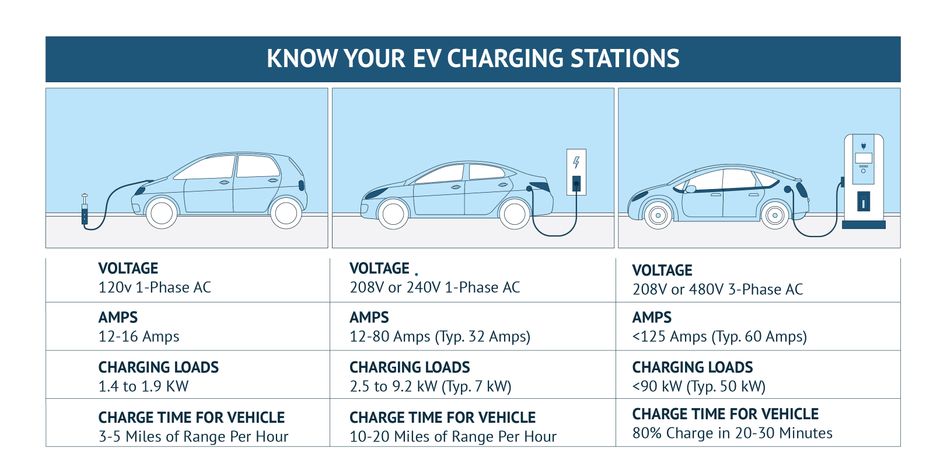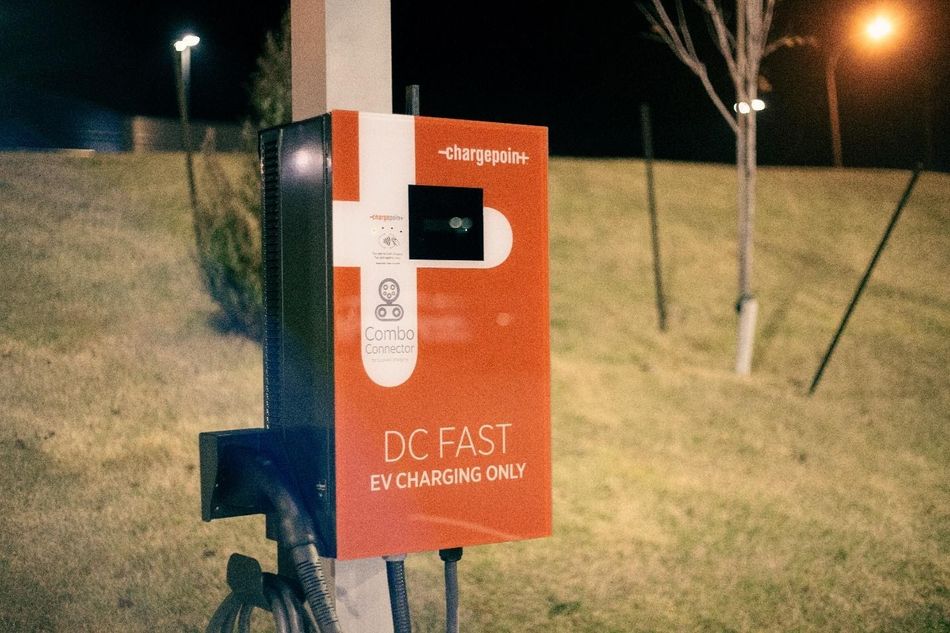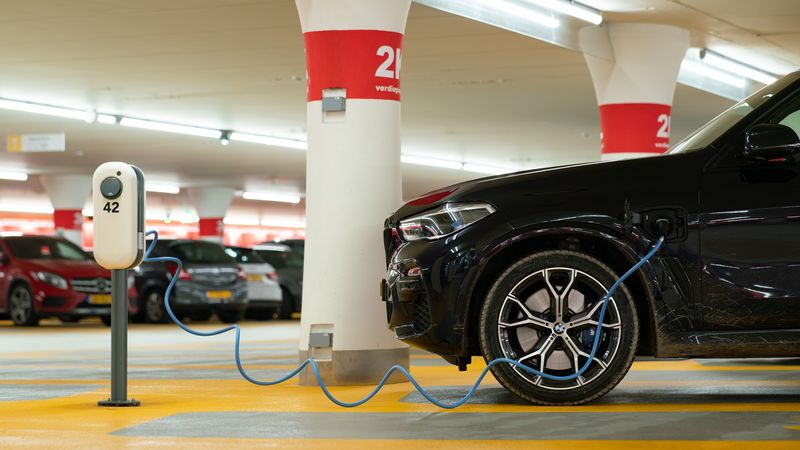How Digital Control and SiC Microchips Unlock Level 3 Fast Charging
Reducing charge time is one of the remaining hurdles for EVs to overtake traditional cars in global sales. Combining digital control and silicon carbide (SiC) delivers level 3 or DC fast charging to reduce these charge times dramatically.
This is the fifth article and final in a 5-part series exploring the future of mobility. The series looks into which technologies enable rapid advancements in the efficiency, safety, and power of the vehicles of tomorrow. This series is sponsored by Mouser Electronics, an online distributor of electronic components. Through their sponsorship, Mouser Electronics is dedicated to supporting a future of connected and efficient mobility.
Introduction
The success of the Tesla Model 3 has disrupted the global automotive market. With industry experts betting it would fail, the Model 3 launch hit a home run in both the US and Europe. Responding to this market phenomenon, GM, Ford, and Volkswagen have entered the electric car arena, committing $20 billion, $6 billion, and $91 billion, respectively, and are on route to deliver comprehensive electric portfolios by 2030. Volvo has promised to produce 100% Electric Vehicles by 2030, while Volkswagen is investing in having six battery factories running by 2023[1].
Though automotive electrification has taken a big step forward, battery charging has been a critical restraint for mass adoption, with slow to develop charging infrastructure average charge times still well above the usual refuel times for internal combustion engine vehicles. Aside from securing enough lithium supply for EV battery production[2], reducing charge time is one of the biggest remaining hurdles for electric cars to overtake traditional vehicles in global sales. An answer to shorten charging periods is the combination of digital control (e.g., Battery Management Systems BMS) and silicon carbide (SiC).
Charging Levels and Definitions
The automotive industry categorizes electric vehicle charging into three levels. The higher the level, the faster the charge. Development in charging technology has shifted charge times from hours to minutes and removed the practical reality that the vehicle must charge overnight. The three charging levels are described below, with their ranges and performance.

EV Charging Levels (3)
Level 1 (120V AC)
It is possible to charge an electric vehicle with a standard 120V AC home outlet. This charging method only adds about 40 miles of range in 8 hours due to the low voltage level. Even a full overnight charge will not be sufficient to replenish an empty battery. Due to this method’s impracticality, only 5% of public EV charging stations employed Level 1 technology.
Level 2 (208V/240V AC)
Level 2 AC charging operates at 240V for residential or 208V for commercial properties. Though most homes have 240V power, the user may need to upgrade or move some equipment to enable the vehicle to access the power. This level provides 10-20 miles of range per hour of charge. This level still requires a time investment even though it offers five times the miles of Range Per Hour of Level 1. Level 2 is a step-change improvement over level 1, but it requires a dedicated 40A circuit. The convenience of still charging at home or the office and the performance gain over level 1 are two reasons over 80% of public charging stations employ this technology.
Level 3/DC Fast Charge (208V/480V AC)
DC fast charging begins to approach parity in refueling (recharging) time between combustion and electric vehicles. The power conversion from AC to DC occurs within the charging station, followed by a DC/DC step that converts the voltage to the level the EV requires. It is the high-voltage DC power that reduces the time to charge.
Achieving this level means that drivers can refuel mid-trip with charge times on par with typical gas pump refuel times. Enabling charging while away from home also means that drivers may not need to upgrade their home equipment. This EV charging technique delivers up to 80 miles of range in 20 minutes – 12 times the rate of level 2.
At the moment, Level 3 accounts for only 15% of the existing public charging infrastructure. The chargers must be small, durable, reliable, and efficient to ensure commercial viability for widespread use. Digitally controlled silicon carbide (SiC) semiconductors solve the technical challenge and clear the path for reducing EV charge time to the level of a gas-powered car.
The Solution to Deliver DC Fast Charge
The approach takes a three-phase power source and employs a Vienna rectifier-based power correction factor. It adds the DC-DC converter to provide the target voltage for the vehicle. The process contains switching losses due to switching frequencies at a high-power multiple and conversion loss escaping as heat [4]. To reduce these inefficiencies and enable higher-temperature operation, engineers developed wide bandgap semiconductor materials, such as SiC.

Silicon Carbide (SiC)
MOSFET-SiC-1200V is an interesting example of transformative SiC technology that could deliver the desired outcomes for Level 3 charging (Figure 3). A SiC with 1200V can offer high performance for improved system efficiency and reduced weight and size. The 1200V does not degrade over its life and delivers fast switching enabled by its wide bandgap through reduced internal gauge resistance while providing stable, reliable operation.

With less resistance and heat loss characteristics, SiC’s are power-dense. They package efficiently and do not contain excess material, making them lighter and more durable due to higher-temperature operation. Silicon carbide is bidirectional, easier for designers to achieve in SiC than silicon, and provides the efficiency, power density, reliability, and durability that DC fast charging requires. SiC addresses the technical challenges of high voltage charging both efficiently and economically.
Digital Control
Applying digital control to the SiC is the second critical aspect of delivering Level 3 charge. Usually, gate drivers are good matches to the performance level of the SiC with the robustness of digital control. This type of controller optimizes the inter-step switching for efficiency and employs circuit control protection to address the technical challenges of higher-voltage, elevated-temperature operation for EV Level 3 charging.
Advances in digital control solutions can be found in the market and several products aim to overcome the excess voltage and resonant current emitted during loading periods. In recent times, researchers have developed novel control methods suppressing overvoltage and resonant current during the turn-off period of the SiC [6]. Such solutions need to be available for Level 3 options and the opportunities to do so are not ignored by the automobile and energy industries.
Conclusion
Electrification is a direction, not a distraction. Major automotive players are bringing electric vehicles into the mainstream and are pushing for cost-competitiveness to combustion-engine cars. SiC coupled with digital control provides the ideal solution to deliver Level 3 charging performance This combination offers durability and reliability and balances efficient, economic, and safe control methodology to ensure the stability of Level 3 stations.
This article was initially published by Mouser and Microchip in an e-magazine. It has been substantially edited by the Wevolver team and engineer Nicolas Sarmiento Sierra. It's the final article of a 5-part series exploring the future of mobility. Future articles will examine the cybersecurity concerns in connected vehicles, discuss solutions for fast charging, and dive into how ethernet can deliver optimum data networks.
The first article looked at software control.
The second article examined cybersecurity concerns in connected vehicles
The third article surveyed the potential of automotive ethernet
The fourth article discussed comprehensive control solutions.
About the sponsor: Mouser
Mouser Electronics is a worldwide leading authorized distributor of semiconductors and electronic components for over 1,100 manufacturer brands. They specialize in the rapid introduction of new products and technologies for design engineers and buyers. Their extensive product offering includes semiconductors, interconnects, passives, and electromechanical components.
References
1. ManufacturingNet. Who Are Tesla’s Biggest Competitors? [Internet]. 2021 [cited 2021 Jun 17]. Available from: https://www.manufacturing.net/automotive/article/21390017/who-are-teslas-biggest-competitors
2. Costa CM, Barbosa JC, Gonçalves R, Castro H, Campo FJD, Lanceros-Méndez S. Recycling and environmental issues of lithium-ion batteries: Advances, challenges and opportunities. Energy Storage Mater [Internet]. 2021;37(January):433–65. Available from: https://doi.org/10.1016/j.ensm.2021.02.032
3. Brodd K. Find Charging Options for Your Electric Vehicle [Internet]. 2017 [cited 2021 Jun 17]. Available from: https://www.carolinacountry.com/your-energy/energytech/know-charging-options-to-keep-your-ev-rolling
4. Ngwashi DK, Phung LV. Recent review on failures in silicon carbide power MOSFETs. Microelectron Reliab. 2021;123(February):114169.
5. Microchips. Microsemi / Microchip Silicon Carbide (SiC) Schottky Barrier Diodes [Internet]. 2021 [cited 2021 Jun 17]. Available from: https://www.mouser.de/new/microchip/microsemi-sic-sbd/
6. Qin H, Mo Y, Xun Q, Zhang Y, Dong Y. A digital-controlled SiC-based solid state circuit breaker with soft switch-off method for DC power system. Electron. 2019;8(8).

